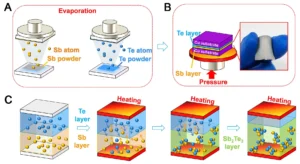Energy is the backbone of modern civilisation, powering everything from our homes to our industries and transportation systems. However, the sources of energy we rely on can be broadly categorised into two main types: conventional and non-conventional. Understanding the differences between these two types of energy sources is crucial as we strive towards a more sustainable and environmentally friendly energy future.
Definition of Lasers:
Conventional energy sources are those that have been traditionally used for centuries to meet human energy needs. These sources are typically derived from natural resources that exist in abundance and have been exploited for their energy content. The primary conventional energy sources include:
Fossil Fuels:
Coal: Coal is a combustible sedimentary rock that has been used as a significant source of energy for centuries. It is primarily burned to generate electricity and heat.
Oil: Also known as petroleum, oil is a liquid fossil fuel that is refined to produce gasoline, diesel, and various other petroleum products used in transportation, heating, and industrial processes.
Natural Gas: Natural gas is a gaseous fossil fuel composed mainly of methane. It is used for heating, electricity generation, and as a fuel for vehicles.
Nuclear Energy:
Nuclear energy is generated through nuclear fission, where the nucleus of an atom is split, releasing a large amount of energy. This energy is used to heat water and produce steam, which drives turbines to generate electricity.
Conventional energy sources have played a crucial role in driving economic growth and development over the past century. However, they also come with significant drawbacks, including environmental pollution, greenhouse gas emissions, and finite availability. As a result, there has been a growing emphasis on exploring alternative, non-conventional energy sources.
Non-Conventional Energy Sources:
Non-conventional energy sources, also known as renewable or alternative energy sources, are derived from resources that are naturally replenished and virtually inexhaustible. Unlike conventional sources, they do not rely on the combustion of fossil fuels or nuclear reactions to generate energy. Some prominent non-conventional energy sources include:
Solar Energy:
Solar energy is derived from the sun’s radiation and can be captured using photovoltaic (PV) cells to generate electricity or solar thermal collectors to produce heat for various applications.
Wind Energy:
Wind energy is harnessed by wind turbines that convert the kinetic energy of wind into mechanical power, which is then converted into electricity.
Hydroelectric Energy:
Hydroelectric energy is generated by harnessing the gravitational force of flowing or falling water. It is one of the oldest and most widely used forms of renewable energy.
Biomass Energy:
Biomass energy is derived from organic materials such as wood, agricultural residues, and municipal solid waste. These materials can be burned directly for heat or converted into biofuels such as ethanol and biodiesel.
Geothermal Energy:
Geothermal energy is produced by harnessing the heat stored beneath the Earth’s surface. It can be used for heating and cooling buildings, as well as for electricity generation through geothermal power plants.
Differences Between Conventional and Non-Conventional Energy Sources:
Environmental Impact:
Conventional energy sources, such as fossil fuels and nuclear energy, often have significant environmental impacts, including air and water pollution, habitat destruction, and contribution to climate change through greenhouse gas emissions. Non-conventional energy sources, on the other hand, are generally cleaner and produce minimal or no greenhouse gas emissions during operation, making them more environmentally friendly.
Availability and Sustainability:
Conventional energy sources are finite and non-renewable, meaning that they will eventually be depleted as they are extracted and consumed. In contrast, non-conventional energy sources are renewable and virtually inexhaustible, as they are derived from constantly replenished natural processes such as sunlight, wind, and water flow.
Energy Security:
Conventional energy sources are often subject to geopolitical tensions and supply disruptions, as they rely on finite resources that are concentrated in specific regions of the world. Non-conventional energy sources, particularly renewable energy, offer greater energy security by diversifying the sources of energy production and reducing dependence on imported fuels.
Economic Considerations:
Conventional energy sources have historically enjoyed cost advantages due to economies of scale and well-established infrastructure. However, the costs of renewable energy technologies, such as solar and wind power, have been declining rapidly in recent years, making them increasingly competitive with conventional sources, especially when considering the long-term environmental and societal costs associated with conventional energy production.
Conclusion:
In conclusion, the differences between conventional and non-conventional energy sources are significant and have far-reaching implications for our environment, economy, and energy security. While conventional sources have been the backbone of our energy systems for centuries, their environmental impacts and finite availability necessitate a transition towards cleaner, more sustainable alternatives. Non-conventional energy sources offer a promising pathway towards a more resilient and environmentally friendly energy future, but their widespread adoption will require concerted efforts in research, policy support, and investment to overcome technological and economic barriers.




